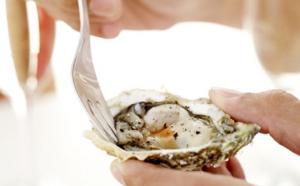Seafood is any product that comes from salt water and is served as food. What makes seafood healthy is its high-quality protein and low fat content. Some of these products contain omega-3 fatty acids, as well as several vitamins and minerals that are not easily found in other foods. Some examples are iodine, B complex vitamins, calcium, and zinc. However, seafood can also be the cause of certain allergies and intoxications. Here we will share with you some recommendations on how to select, prepare, and cook seafood so you and your family can enjoy it safely.
Selecting 
- Make sure the shells of clams, oysters, and mussels are clean and intact. Don’t buy them if the shells are broken or cracked.
- If you are buying live seafood (clams, oysters and/or mussels), gently tap the shell to test for freshness. If it closes up right after you hit it, buy it; if it doesn’t, put it back where you found it.
- Crustaceans (crabs and lobsters) are highly perishable (they spoil rapidly). Buy them alive and check for leg movement.
Storing
Seafood tastes much better when it is fresh. Therefore, if you need to store it, keep in mind that it is highly perishable. Cover it with ice or refrigerate it for no more than two days.
If you need to store seafood for more than two days, wrap it very well and freeze it. Thaw seafood gradually by putting it in the refrigerator one night before cooking and eating it. Never leave seafood at room temperature for more than two hours; bacteria multiply very rapidly under these conditions and they can cause serious food intoxications.
If you buy frozen seafood, make sure the bags in which it is packaged don’t have ice particles inside. If you find ice inside the bag, the product is probably not fresh anymore or may have been defrosted before.
Preparing and Cooking
It is important to keep raw seafood separated from ready-to-eat foods in order to avoid cross-contamination.
The best way to prevent hazardous bacteria from growing on seafood is by cooking it at the right temperature for the appropriate length time. In order to know when seafood is properly cooked, make sure:
- The shells of shrimp and lobsters become pink and opaque.
- The shells of oysters, clams and mussels open up (discard those that don’t).
Now you can safely enjoy seafood.
Source:
United States. US Food and Drug Administration. (2006) “Fresh and Frozen Seafood. Selecting and Serving it Safely”. Retrieved on August, 2008 from: http://www.cfsan.fda.gov/~acrobat/seafsafe.pdf

